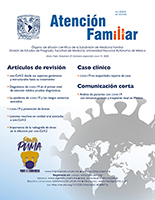Reactive Injuries in the Oral Cavity Associated to sars-CoV-2
Main Article Content
Abstract
The virus called sars-CoV-2 is a beta rna positive-chain coronavirus. Several types of coronaviruses are known to infect humans, including the Middle East Acute Respiratory Syndrome (mers-CoV) hcoV-oc43, hcoV-nl63, hcoV-229E, among others. During sars-CoV-2 infection, skin and mucosal lesions occur as secondary reactive manifestations due to deterioration of the systemic condition, the possibility of opportunistic infections, or adverse reaction to given treatments. Due to the presence of multiple receptors in the respiratory tract, the lungs have been identified as the primary sites of infection, which leads to severe acute respiratory syndrome in severe cases. The immune response is measured by a variety of host factors, as well as by the activation of interleukins, cytosine, and chymosin, which can lead to skin and oral lesions. This article identifies and describes reactive lesions in the oral cavity observed in patients with sars-CoV-2 in order to help health professionals and patients recognize manifestations of the disease more immediately.
